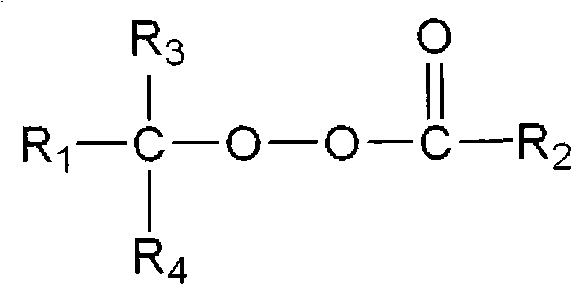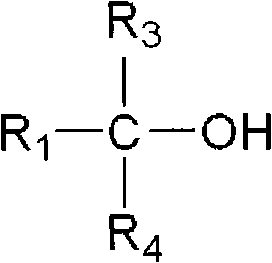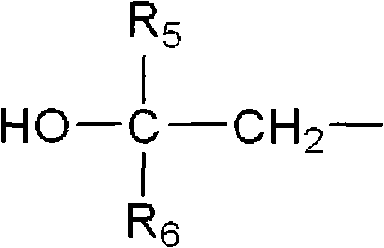Process for producing polymerization toner, process for producing binder resin for toner, and toner
A technology of binder resin and toner, applied in developing agent, electrography, optics, etc., can solve problems such as unreacted polymerizable monomer or decomposition product residue, image quality degradation, photosensitive member pollution, etc., to achieve Excellent charging stability, eliminating the influence of polymerization inhibitors, and improving efficiency
- Summary
- Abstract
- Description
- Claims
- Application Information
AI Technical Summary
Problems solved by technology
Method used
Image
Examples
Embodiment 1
[0175] Production of pigment-dispersed pastes
[0176] Styrene: 78.0 parts by mass
[0177] Carbon black: 7.0 parts by mass
[0178] The above-mentioned materials were fully premixed in a container, and then, the temperature of the mixture was kept below 20° C., and the mixture was dispersed and mixed with an attritor (manufactured by Mitsui Miike Machinery Co., Ltd.) for about 4 hours, A pigment-dispersed paste is thus produced.
[0179] Production of toner particles
[0180] 390 mass parts of 0.1-mol / l Na 3 PO 4 The aqueous solution of the solution was introduced into 1,150 parts by mass of ion-exchanged water, and the temperature of the mixture was raised to 60° C. while stirring the mixture. Thereafter, 58 mass parts of 1.0-mol / l CaCl 2 Aqueous solution of is added to the mixture, and the whole is further continuously stirred, thereby preparing 3 (PO 4 ) 2 An aqueous medium that constitutes a dispersion stabilizer.
[0181] Meanwhile, the following materials ...
Embodiment 2
[0236] In addition to using 6.8 parts by mass of 3-hydroxy-1,1-dimethylbutylperoxy-2-ethylbutyl ester instead of 6.0 parts by mass of 3-hydroxy-1,1-dimethylbutylperoxyisobutyl A toner was produced in the same manner as in Example 1 except that the temperature at the time of polymerization was changed to 81°C.
Embodiment 3
[0278] Production of binder resins for toners:
[0279] An aqueous medium was prepared by dissolving 0.2 parts by mass of polyvinyl alcohol in 300 parts by mass of ion-exchanged water. At the same time, 78.0 parts by mass of styrene, 22.0 parts by mass of n-butyl acrylate, and 2.5 parts by mass of 3-hydroxy-1,1-dimethylbutyl peroxyiso Butyl ester, thus preparing the monomer composition. The monomer composition was introduced into an aqueous medium, and the mixture was stirred for 15 minutes with a TK-homomixer (manufactured by Tokushu Kika Kogyo), thereby preparing a suspension dispersion. Under a nitrogen atmosphere, the temperature of the above suspension dispersion liquid was raised to 85° C., and polymerization was initiated. Furthermore, the liquid was kept at this temperature for 24 hours to complete the polymerization reaction. After the reaction was completed, the suspension dispersion liquid was cooled, separated by filtration, washed with water and dried, thereby ...
PUM
| Property | Measurement | Unit |
|---|---|---|
| particle diameter | aaaaa | aaaaa |
| particle diameter | aaaaa | aaaaa |
| particle diameter | aaaaa | aaaaa |
Abstract
Description
Claims
Application Information
 Login to View More
Login to View More - R&D
- Intellectual Property
- Life Sciences
- Materials
- Tech Scout
- Unparalleled Data Quality
- Higher Quality Content
- 60% Fewer Hallucinations
Browse by: Latest US Patents, China's latest patents, Technical Efficacy Thesaurus, Application Domain, Technology Topic, Popular Technical Reports.
© 2025 PatSnap. All rights reserved.Legal|Privacy policy|Modern Slavery Act Transparency Statement|Sitemap|About US| Contact US: help@patsnap.com



